Vermeer Newsletter no. 44
Dec 19, 2020
Dec 19, 2020
IN BRIEF
–essentialvermeer website additions –
1. Mechelen: 1625–1885, curated by Jonathan Janson
– exhibitions, news & multi-media –
3. Frick curator Aimee Ng pulls back the curtain on Vermeer's Mistress and Maid in video
4. The Frick Collection upgrades web presence and adds a new page on Vermeer
5. Rijksmuseum releases short video on Vermeer
6. Hello Vermeer! Mauritshuis brings children closer to Vermeer
7. Mauritshuis becomes first Gigapixel museum in the world
8. New film about Vermeer forger Han van Meegeren
9. EV reminders: don't forget these 2020 Vermeer-related events
Mechelen: 1625 to 1885
curated by Jonathan Janson with the collaboration of Peter Jochems
http://www.essentialvermeer.com/delft/delft_today/mechelen-what-we-know.html
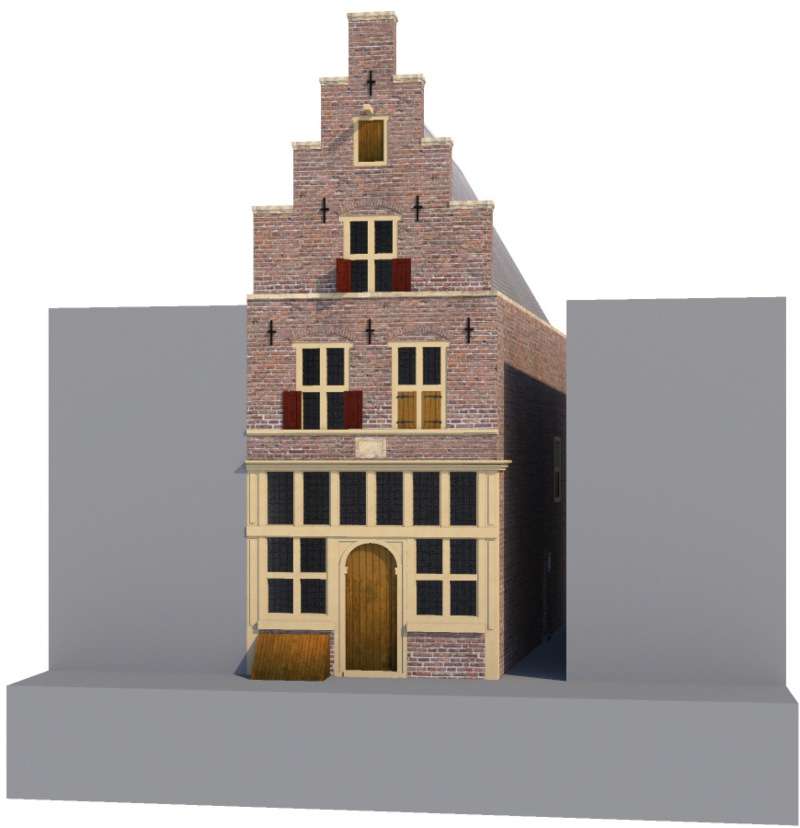 Hypothetical reconstruction of the building corresponding to Mechelen in c. 1730 engraving published by Gillis van Scheyndel
Hypothetical reconstruction of the building corresponding to Mechelen in c. 1730 engraving published by Gillis van ScheyndelIn 1641, the young Vermeer and his family moved into a large building on the corner of Market Place and Old Men's Ally in Delft called Mechelen. Here his father would conduct his business as an innkeeper, art dealer and caffa worker, and, perhaps, Vermeer made his first paintings. Little is know about the building except that it had four fireplaces and was demolished in 1885. In mainstream Vermeer-related literature Mechelen has been traditionally illustrated with a print of the Market Place published in c. 1730 by Leonard Schenk.
However, only a few of today's Vermeer devotees are aware that a number of images of Mechelen have survived.
This brand-new, richly illustrated EV article traces the life of the building from 1625, when the first known effigy was made, to 1885, when plans were drawn up to widen the narrow Old Men's Ally by demolishing the historic building.
The article features an in-depth analysis of rarely considered period engravings, lithographs, maps, diagrams and pre-1885 photographs. Moreover, two 3-D virtual reconstructions help us to picture what Mechelen may have looked like in 1625 and in its final days. In-depth research was done in collaboration with the painter and Vermeer lover Peter Jochems. 3-D reconstructions by Timothy De Paepe, curator of the Museum Vleeshuis.
from the Frick Collection website:
The Frick Collection announced a two-year installation plan for the Frick Madison, the institution’s temporary home while its historic buildings at 1 East 70th Street undergo renovation. Anticipated to open in early 2021 and remain operating for the duration of construction, Frick Madison will occupy the Marcel Breuer–designed building on Madison Avenue, formerly home to the Whitney Museum of American Art and most recently The Met Breuer.
For the first time, audiences will be able to enjoy a substantial gathering of highlights from the collection outside the domestic setting of the Frick’s Gilded Age mansion, only five blocks away. In a departure from the Frick’s customary presentation style, works will be organized chronologically and by region. The exhibition will feature treasured paintings and sculptures by Bellini, Clodion, Gainsborough, Goya, Holbein, Houdon, Ingres, Piero della Francesca, Rembrandt, Titian, Turner, Velázquez, Vermeer, Whistler, and many others, alongside impressive holdings in the decorative arts.
The three Vermeer paintings of the Frick—Officer and Laughing Girl, Girl Interrupted in her Music and Mistress and Maid—will be hung side by side, a rare event.
The installation is organized by the Frick’s curatorial team, led by Xavier F. Salomon, Deputy Director and Peter Jay Sharp Chief Curator, with Curator Aimee Ng, guest curator Giulio Dalvit, and former Curator of Decorative Arts Charlotte Vignon, now director of the Musée National de Céramique in Sèvres.
Cocktails with a Curator: Vermeer's Mistress and Maid
https://www.youtube.com/watch?v=bJx8C8AsjQo
In an initiative intended to bring the public closer to its unique collection, the Frick is "concocting the perfect mix of cocktails and art." Every Friday at 5:00 p.m. The Frick invites the public for happy hour (remotely) while a museum insider offers insights on a work of art with a complementary cocktail (sorry, the Frick will provide the happiness but you have to mix you own beverage).
The video features Vermeer's luxurious Mistress and Maid, in which Curator Aimee Ng skillfully pulls back the curtain on hidden details in the painting, the largest of the Frick’s three Vermeers. Take a closer look at the rumpled tablecloth, the lady’s wispy curls, and the dark background to understand how this mysterious work has changed since Vermeer applied paint to canvas in the mid-17th century.
Youtube Cocktails with a Curator playlist:
https://www.youtube.com/playlist?list=PLNVeJpU2DHHR_0y_Zvgn3MgZQQFcFx2eI
suggested cocktail:
Genever Brulée: 2 oz. genever, 1 teaspoon brown sugar, few dashes of classic bitters, dash of orange bitters, a splash of sparkling water, garnished with a caramelized orange slice.
suggested image:
In order to get the most out of the talk you might wish to pull up a good image of the Mistress and Maid and set it side by side on your monitor as the video plays. The largest image is at the Google Art Project:
https://artsandculture.google.com/asset/mistress-and-maid-johannes-vermeer/xwFyx_AQGT2Y-w?hl=en\
But the colors are far superior on the Frick website, although it is a bit more tricky to maneuver the painting in the zoom box.
https://collections.frick.org/objects/274/mistress-and-maid
Johannes Vermeer
https://www.frick.org/art/artists/vermeer
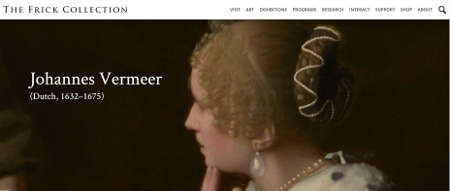
The Frick Collection website recently upped their digital presence with an elegant, user-friendly web study dedicated exclusively to their three paintings by Vermeer: Officer and Laughing Girl, Girl Interrupted in her Music and Mistress and Maid. their three Vermeers. The page offers access to the paintings, articles, podcasts and a few videos, as well links to as the Frick's rich collection of Photoarchive images, scanned books and archival documents.
Hello Vermeer!
Mauritshuis, The Hague
10 July–05 September, 2021
from the Mauritshuis website:
From 10 July 2021, the hands-on family exhibition Hello Vermeer! can be enjoyed at the Mauritshuis. Families with children aged 3 to 11 can get to know Vermeer via various activities in the museum. During the summer of 2019, families got to know Rembrandt in the hands-on family exhibition Hello Rembrandt! Now children can follow in the footsteps of another great Dutch master: Johannes Vermeer.
Together, families will learn more about Vermeer. What paint did he use in his pictures? How did he play with light? How do his paintings continue to inspire people around the world? Various fun activities and creative workshops will enable children to really get to know this seventeenth-century artist. Entry is free to visitors aged 18 or under.
https://www.mauritshuis.nl/en/press/persarchief/2020/mauritshuis-eerste-gigapixelmuseum-ter-wereld/
While some museums are closed due to the Covid-19 pandemic, a few institutions have opened digital projects providing virtual access to art and culture.
As the result of a long collaboration between the Mauritshuis and the company Madpixel, the museum in The Hague is the first in the world to be fully digitized in gigapixel format–meaning that its virtual tour, which can be accessed via its website or on Madpixel’s Second Canvas app, is viewable in greater resolution than any other. The brushstrokes and craquelure of the museum’s masterpieces by Vermeer, Rembrandt and others can now be experienced from afar as never before– while the 360-degree format means that the same can be said of the interior in which they are housed.
We Love Vermeer
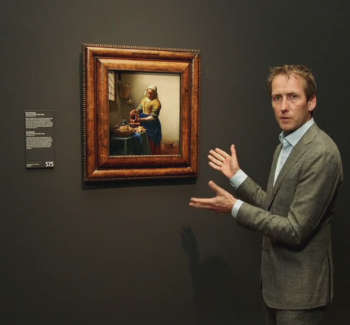 Pieter Roelofs, Head of Paintings and Sculpture at the Rijksmuseum
Pieter Roelofs, Head of Paintings and Sculpture at the Rijksmuseum The Rijksmuseum has released a short video in which Pieter Roelofs, Head of Paintings and Sculpture, explains why Vermeer was virtually unknown until the mid-19th century while today he is one of the most renowned artists in the world.
The Last Vermeer
director: Dan Friedkin
writers: Jonathan Lopez (based on the book The Man Who Made Vermeers)
stars: Guy Pearce, Claes Bang, Vicky Krieps
The Last Vermeer (originally titled Lyrebird) is an American drama film directed by Dan Friedkin from a screenplay by John Orloff, Mark Fergus, and Hawk Ostby. It is based on the 2008 book The Man Who Made Vermeers by Jonathan Lopez, and tells the story of Han van Meegeren (played by Guy Pearce), an art forger who forged Vermeer paintings and swindled millions of dollars from the Nazis, alongside Dutch Resistance fighter Joseph Piller (Claes Bang).
The film had its world premiere at the Telluride Film Festival on August 31, 2019, and is scheduled to be theatrically released on November 20, 2020, by Tristar Pictures.
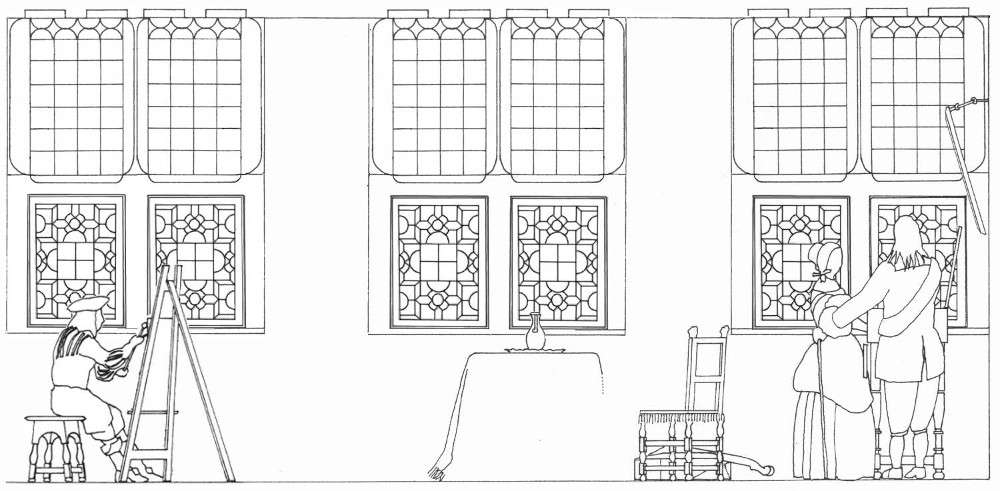 Vermeer's studio, drawn from three drawings of Philip Steadman, Vermeer's Camera: Uncovering the Truth behind the Masterpieces (2002) courtesy of Philip Steadman
Vermeer's studio, drawn from three drawings of Philip Steadman, Vermeer's Camera: Uncovering the Truth behind the Masterpieces (2002) courtesy of Philip Steadman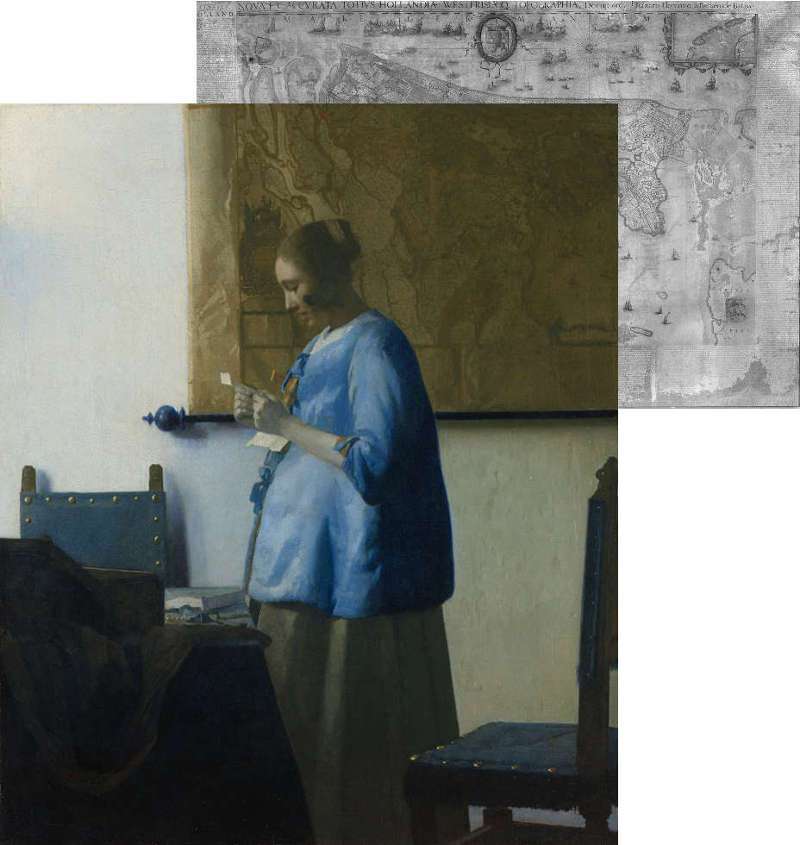
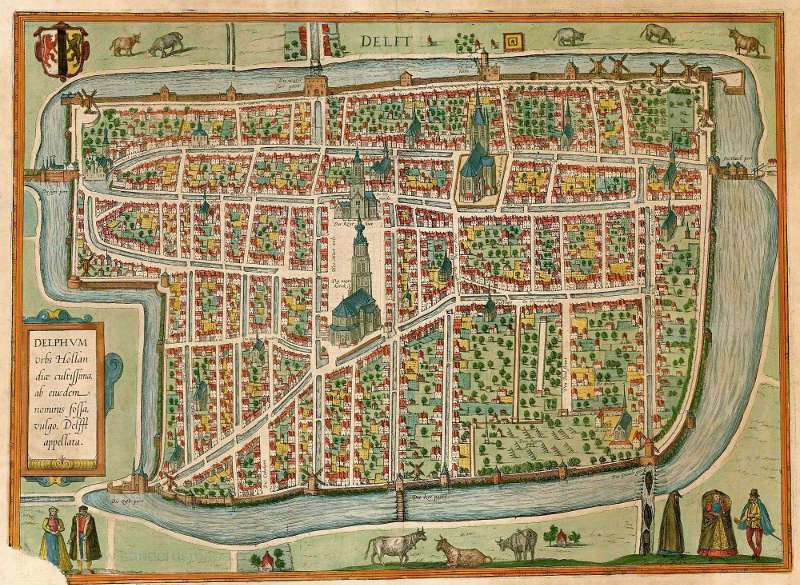 Map of Delft from: Civitates Orbis Terrarum. Liber tertius
Map of Delft from: Civitates Orbis Terrarum. Liber tertius If you discover a  or anything else that isn't working as it should be, I'd love to hear it! Please write me at: jonathanjanson@essentialvermeer.com
or anything else that isn't working as it should be, I'd love to hear it! Please write me at: jonathanjanson@essentialvermeer.com